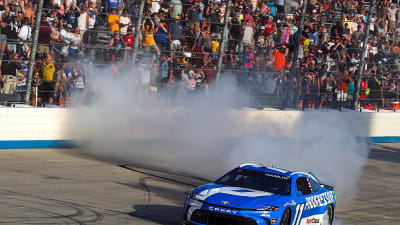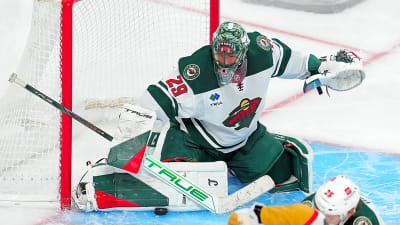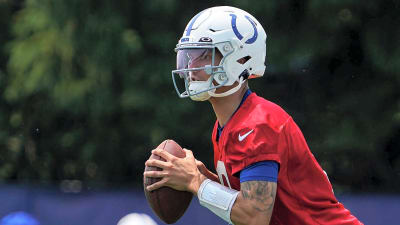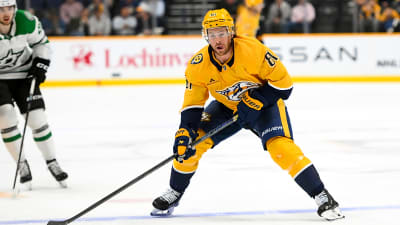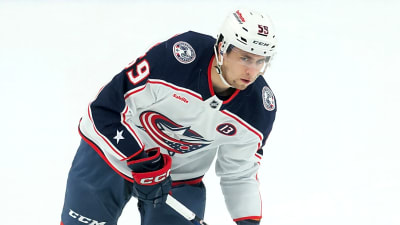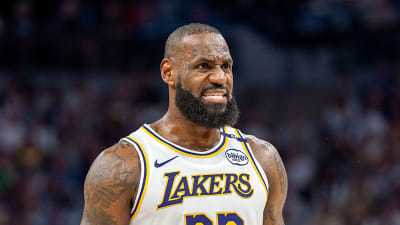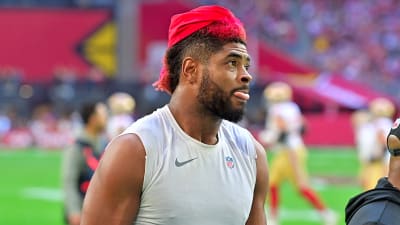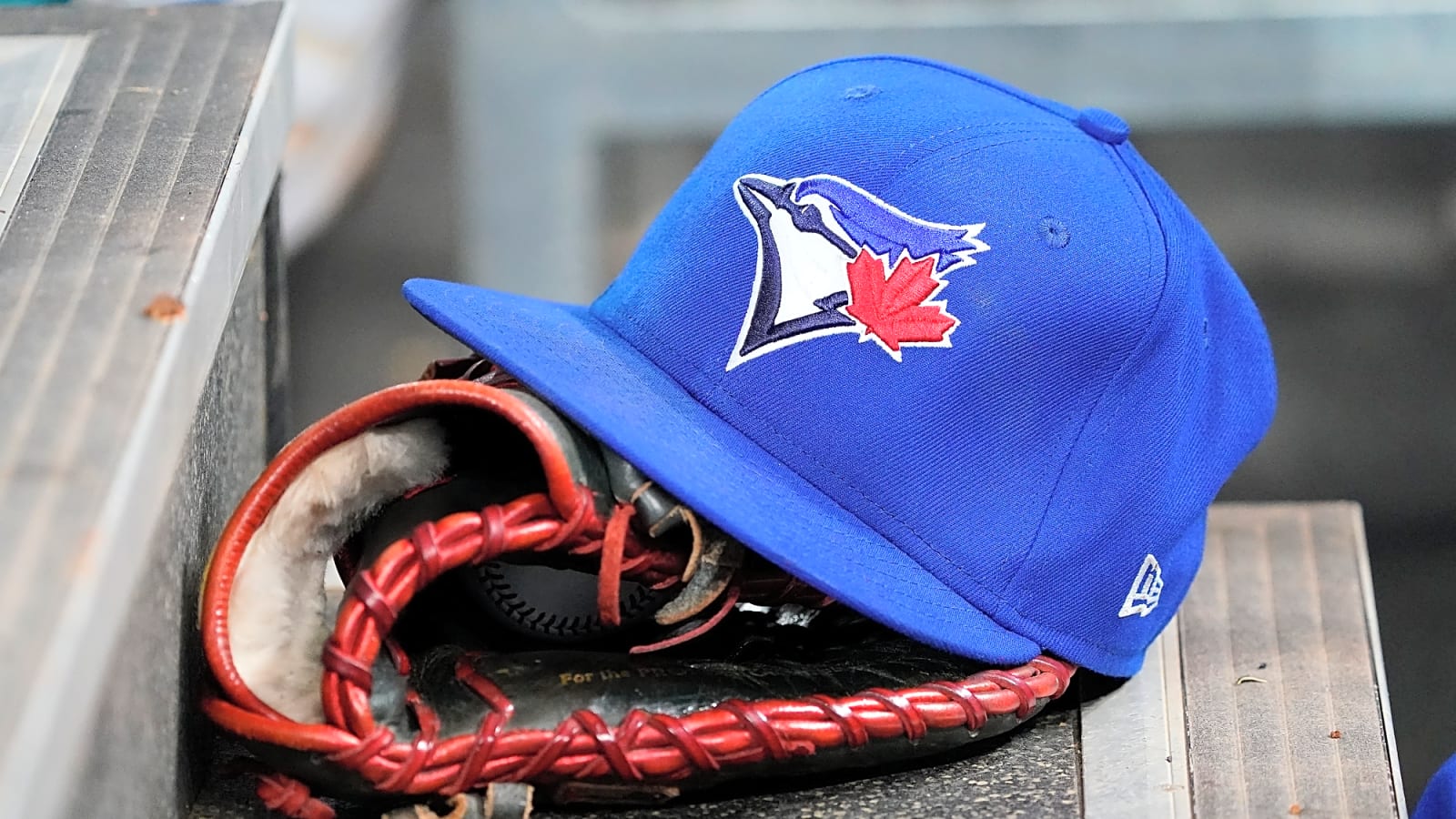
Arm injuries are a frustrating reality for all 30 organizations, but there may not be a farm system that has had its top minor league pitchers more decimated by injury than the Blue Jays. Most notably, one of the most talented pitching prospects in the sport in Ricky Tiedemann has thrown just 140 innings since being drafted in 2021, and their 2022 first rounder Brandon Barriera has barely eclipsed 20 innings pitched.
Both will miss most if not all of 2025 due to Tommy John surgery, and right-hander Jake Bloss unfortunately suffered the same fate just a handful of starts into his 2025 season. Ross Atkins and company have not let that deter them, going heavy on arms in the 2024 draft with early returns looking positive in Trey Yesavage and Khal Stephen.
Arjun Nimmala’s rapid improvement bodes well for the future of the shortstop position, while Josh Kasevich and Alan Roden at least look like high floor big league pieces. It may not be a great farm system, but with some better luck in the arm health department, there is some intriguing pitching depth to pair with several high floor bats.
1. Arjun Nimmala – SS – (High-A)
Height/Weight: 6’0″, 185 | Bat/Throw: R/R | 1st Round (20), 2023 (TOR) | ETA: 2027
| HIT | Plate Disc. | GAME POWER | RUN | FIELD | FV |
| 35/45 | 45/55 | 45/55 | 55/55 | 45/55 | 50 |
Few prospects enjoyed more helium heading into the 2023 draft than Nimmala. One of the youngest players in the class, his present bat speed and projectable frame has evaluators dreaming on what could be. A slow start to his pro career that included a Development List stint slowed the momentum some, but he returned looking much more polished at the plate while tapping into his intriguing power potential more consistently.
Offense
A quick stroke grooved for lift, Nimmala really began to lean into his ability to pull the ball in the air in his first full pro season. The loft in his swing resulted in some challenges with swing and miss, something he improved upon after a brief stint on the Development List to refine some of his swing mechanics. His subtle changes aided his ability to turn on velocity which spilled into his ability to recognize spin as he looked less rushed in the box.
Nimmala extended those improvements into the 2025 season where he made a seamless transition to High-A thanks to his significant improvements against secondaries and enhanced adjustability in the box, spoiling tough pitches with a tangible increase in the O-Contact department. He has also getting his A swing off more consistently, pushing his average exit velocity and hard hit rate up.
The hit tool will likely be fringy for Nimmala, but his improving swing decisions and the ability to already get into his game power give him the ingredients to be an above average offensive threat. There’s still room to fill out physically and he could still stand to use his lower half a bit more effectively to tap into more pop.
Defense/Speed
An average runner with good footwork and range at shortstop, Nimmala has the arm strength to stick at the position with the actions to be a good defender there. Nothing jumps off of the page, but he consistently puts himself in good positions to make plays with fluid actions. Though he does not record the best home-to-first times, Nimmala still provides some value on the base paths and was 9-for-10 on stolen bases in 82 Low-A games in 2024.
Outlook
Nimmala’s strong second half and ability to make mechanical tweaks in his age 18 season is encouraging. Even with the improvements, there’s some risk to the profile given the swing and miss (29.7% K-Rate after Dev. List), but his chances of sticking at shortstop and advanced feel to get into his power in games helps round out his profile. The hot start to 2025 only helps his case.
Plate discipline will be an important wrinkle for Nimmala, who will likely need to walk at a decent clip to maintain desired on base numbers and his tangible improvements to both recognize and hit spin provide optimism in that department. There’s potential for above average power and defense at short if the hit tool continues to trend in the right direction.
2. Ricky Tiedemann – LHP – (Triple-A)
Height/Weight: 6’4″, 220 | Bat/Throw: L/L | 3rd Round (85) – TOR – 2021 | ETA: 2026
| FASTBALL | SLIDER | CHANGEUP | COMMAND | FV |
| 60/60 | 60/70 | 50/60 | 35/45 | 50 |
One of the most talented pitching prospects in the minors, Tiedemann has the potential for three plus pitches along with decent command. It’s all about availability for the southpaw who will return from Tommy John surgery in 2026 having thrown just 140 innings since 2022.
Arsenal
Throwing from a low arm slot, Tiedemann generates a ton of arm speed allowing his already impressive arsenal to play up. The southpaw has three impressive offerings but the combination of his plus fastball and plus changeup has helped him carve up more experienced hitters.
Tiedemann’s fastball sits 94-96 MPH, topping at 99 MPH with plenty of ride and arm-side run. The pitch really jumps out of his hand from the low release point and gets on hitters quickly. Tiedemann maintains his arm speed really well with his plus changeup, making it really difficult to differentiate out of his hand. The change sits in the mid 80s with roughly 18 inches of arm-side fade.
His sweeper has started to emerge as his best out pitch in 2022 and he started to favor it far more than his changeup in 2023. The pitch features sharp break in the low 80s. Tiedemann gained confidence in the pitch as the year went on, dominating hitters to the tune of a .140 batting average with a swinging strike rate of 22% in 2023.
A big guy at 6-foot-4, 220 pounds, Tiedemann can struggle at times to sync up his mechanics, but has has a decent feel for his entire arsenal giving him a chance for average command. His stuff is so good that he can succeed in a rotation with fringy command.
Outlook
Tiedemann easily could’ve debuted in 2023 had arm flare ups not taken him off course over the last couple seasons. He showed well in the Arizona Fall League before dealing with leg issues that delayed his start to the 2024 season just to ultimately be shut down in his first Triple-A start with what would be a turn UCL.
Tiedemann’s command was understandably inconsistent as he dealt with arm issues and bounced back and forth from the IL to the mound, but even in his dominant 2022 showing, the feel to land his secondaries came and went. After more than a year of a layoff, his command will be an important wrinkle to monitor beyond velocity and his overall arm health. All things considered, Tiedemann still has frontline upside given his three plus pitches from the left side, but he will need to prove he can handle the workload and throw enough strikes.
3. Trey Yesavage – RHP – (Low-A)
Height/Weight: 6’4″, 230 | Bat/Throw: R/R | 1st Round (20), 2024 (TOR) | ETA: 2026
| FASTBALL | SLIDER | Splitter | COMMAND | FV |
| 55/55 | 55/55 | 60/60 | 40/50 | 50 |
Comfortably the third best college arm in the 2024 class behind only Chase Burns and Hagen Smith, Yesavage slipped to the latter third of the first round due to some health concerns, but early returns have justified the Blue Jays decision to take him at pick No. 20 as Yesavage’s good feel for a quality three pitch mix should help him get to Toronto quickly.
Arsenal
Yesavage releases his three pitch mix from what would be one of the highest points in baseball, roughly 7.1 feet high. Such a towering release point can hedge the perceived ride of a fastball, but Yesavage averages north of 20 inches of induced vertical break in the mid 90s, still making it an above average fastball that can play well at the top. There’s also more deception built in compared to the average over-the-top release, as his shoulders rock backwards with his glove high.
The high release and ability to hide the ball works in the favor of his secondaries, both of which featuring good vertical separation from the fastball. Yesavage took a huge leap with his splitter in his draft year, with the pitch looking like a plus offering in the mid 80s. Averaging nearly 20 inches of total separation, the pitch is difficult to pick up out of the hand, generating high chase rates and a lot of ground balls.
Yesavage’s 86-88 MPH gyro slider was his most trusted secondary through his collegiate career. The vertical action on it makes it effective against hitters of both handedness, though it plays best against righties, where it flashes above average. It was a consistent weapon for him in his junior season picking up a third of his strikeouts with it, while allowing just one extra base hit.
Outlook
The Blue Jays started conservative with a relatively conservative assignment, kicking his pro career off at Low-A where he immediately overwhelmed hitters. It’s more control over command for Yesavage, but his ability to generate both high chase and whiff rates has helped him navigate in starts where he is not around the zone as much. Despite the conservative assignment, Yesavage is a likely candidate to climb quickly with the pitch mix to dream on No. 3 upside and a great chance of landing as a No. 4 starter.
4. Josh Kasevich – INF – (Triple-A)
Height/Weight: 6’1″, 205 | Bat/Throw: R/R | 1st Round (20), 2023 (TOR) | ETA: 2025
| HIT | Plate Disc. | GAME POWER | RUN | FIELD | FV |
| 65/65 | 55/55 | 30/35 | 50/50 | 50/50 | 50 |
A contact-savant, Kasevich hits the ball harder than you may expect, though often on the ground. With the ability to plug all over the infield, Kasevich is a high probability big league utility piece who could hit enough to be an everyday player.
Hitting
Starting with his hands high and back deep in his stance, Kasevich utilizes a toe tap as he brings his hands down to his slot. It’s a simple operation that allows him to get to his launch position early and rely on his impressive hand-eye coordination. There’s sneaky raw pop with Kasevich, who posted an average exit velocity of 90.5 MPH in 2024, though his flat swing resulted in an average launch angle of just 5.5 degrees.
As a result, Kasevich’s 46% hard hit rate, only converted into six home runs, but he did mix in 28 doubles. If he is able to create a bit more loft without it coming at the expense of his bat-to-ball, Kasevich should be able to get into 10-15 home runs, though his ability to drive the ball to both gaps gives him the upside to rack up plenty of doubles.
Kasevich is more patient than his walk rate would imply, running a chase rate in the low 20% range in 2024, particularly showing comfort in recognizing spin. There’s enough ingredients to get on base at a high clip with the raw power to generate an above average BABIP, which could help him get away with a slightly elevated ground ball rate.
Defense/Speed
A sure-handed defender, Kasevich has a good first step and putting himself in position to make plays consistently. His arm is average at best, but he is able to get the ball out quickly and is comfortable throwing from different angles with enough carry across the diamond. Kasevich is capable of playing an average shortstop and can move around the infield if needed. An average runner, Kasevich will opportunistically steal bases, swiping 13 on 14 tries in 2024.
Outlook
Kasevich is a high floor infielder with enough going for him offensively to be an above average regular if he can convert his raw power into more slug. At the very least, Kasevich has a great chance of riding his plus or better hit tool and defensive versatility into a utility infield role. His start to the 2025 season was delayed due to injury, but Kasevich should enter the big league equation for the Blue Jays in 2025.
5. Khal Stephen – RHP – (Low-A)
Height/Weight: 6’4″, 220 | Bat/Throw: R/R | 2nd Round (59), 2024 (TOR) | ETA: 2027
| FASTBALL | SLIDER | Curveball | Cutter | Splitter | COMMAND | FV |
| 55/55 | 50/50 | 40/45 | 45/50 | 55/55 | 50/55 | 50 |
A big right-hander with a low-effort delivery, Stephen fills up the strike zone with a hoppy fastball and intriguing secondaries that have leveled up since turning pro.
Arsenal
While he mixes in five offerings, Stephen’s fastball sets the tone for his arsenal, throwing it north of 50% of the time with the impressive characteristics it features setting up his secondaries well. Sitting 92-94 MPH, Stephen generates plus carry and above average extension from a somewhat short arm path, causing it to get on hitters quickly and play well at the top of the zone.
Both Stephen’s slider and splitter are above average offerings with good vertical action to pair with his heater. The mid-80s gyro slider picks up plenty of chase at the bottom of the zone along with above average ground ball rates. The same could be said for Stephen’s splitter which looks a lot like his fastball out of his hand, but averages barely over 1,000 RPM in the mid-80s. With more than 16 inches of vertical separation, Stephen picks up even more in-zone whiff with the pitch and gaudy ground ball numbers.
The right-hander will also mix in a cutter that flashes at least average and a taste-breaking curveball. His strong command of the cutter helps it play like an average pitch more frequently.
Outlook
Stephen has quickly looked like a great get for the Blue Jays in the 2024 draft, pairing with first round selection Trey Yesavage to provide a jolt to the organization’s pitching depth. The big right-hander has impressed with his ability to pound the strike zone as a pro, particularly with his fastball and splitter which both generate good whiff numbers within the zone. Stephen has the looks of a quality back end rotation piece who is built to eat innings. He has the upside of a strong No. 4 option who could climb through the minor leagues quite quickly.
6. Alan Roden – OF – (MLB)
Height/Weight: 5’11″, 215 | Bat/Throw: L/R | 3rd Round (98), 2022 (TOR) | ETA: 2025
| HIT | Plate Disc. | GAME POWER | RUN | FIELD | FV |
| 55/55 | 45/45 | 40/45 | 50/50 | 55/55 | 45+ |
Good bat-to-ball has always been Roden’s calling card, but he elevated his stock in 2024 by tapping into some more power. His first taste of the big leagues came with some struggle, but Roden is a well-rounded outfielder who has the upside to be a regular.
Hitting
Starting upright and slightly open with his hands high, Roden coils into his back side with a big hovering leg kick as he pulls his hands down to his slot. Roden is athletic in the box, controlling his body well with good balance despite the loud pre-swing move. He gets to his launch position early, with adjustability from that spot to be able to produce plus contact rates. Big league pitching will likely slash those bat-to-ball markers closer to the above average range, especially if Roden continues to skew towards being more pull-happy. At the same time, Roden started to flash average power to his pull side in 2024, helping his overall outlook, but making it important for him to improve his approach and more effectively pick his spots to look for something he can pull hard.
Roden’s 90th percentile exit velocity jumped from 100 MPH in 2023 to 103 MPH in 2024. The tendency to yank balls can result in a few too many rollovers, which plagued Roden in his MLB debut, but he has the swing path and feel for the barrel to hit line drives to all fields when he is maintaining his direction.
He somewhat struggles with left on left matchups, making him a bulk platoon candidate. His .319/.432/.494 slash line against righties across High-A, Double-A and Triple-A helps his case as a guy who can hit the heavy side of the platoon well enough to hold onto an MLB role. It would likely be hit-over-power, but he could add in 15 homers with good on base if he can make the big pre-swing moves work consistently at the MLB level.
Defense/Speed
A slightly above average runner, Roden covers plenty of ground in the corners thanks to his great jumps and efficient routes. With a strong arm to pair, Roden is easily an above average defender in either corner and could likely plug into centerfield in a pinch. Roden will pick his spots well to steal bags, going 14-for-15 in the stolen base department in 2024.
Outlook
Similar to Josh Kasevich, Roden’s high floor is what makes him an intriguing prospect with enough upside to dream on a regular role, or something close to it. With his defensive skill set and ability to put bat on ball from the left side, Roden should at least land as a fourth outfielder, but the uptick in power he enjoyed in 2024 gives him a shot to be a bulk platoon bat.
7. Landon Maroudis – RHP – (Low-A)
Height/Weight: 6’3″, 190 | Bat/Throw: R/R | 4th Round (121), 2023 (TOR) | ETA: 2027
| FASTBALL | Slider | Curveball | Changeup | COMMAND | FV |
| 45/55 | 45/50 | 40/50 | 40/50 | 40/50 | 45 |
A fourth round pick in 2023, Maroudis signed for late second round money ($1.5 million) to forego his commitment to NC State. He was a two way player in high school, with impressive athleticism at shortstop for his larger frame, making him a fun upside arm. His first pro season was cut to just three starts due to internal brace surgery before returning in May of 2025.
Arsenal
Maroudis is working to gain his velocity back after undergoing elbow surgery, but he averaged 93.8 MPH on his four seam fastball in his three appearances in 2024. His four seamer features some run and ride from a low three-quarters slot allowing it to play to all four quadrants when he is commanding it, with it running more than riding when he throws it to the arm side. While he can sneak it up to generate some whiffs, his fastball is likely most consistent as a ground ball pitch in the bottom two quadrants.
His most effective secondary offering is a bullet slider at 85-87 MPH. It features even less horizontal than some of the other gyro sliders in the Blue Jays organization with less velocity separation from his fastball, sometimes more closely resembling a cutter. Maroudis’s curveball is not as consistently reliable yet, but features two plane break in the 79-81 MPH range with the potential to be an average offering.
The changeup is the furthest off for Maroudis but also has the potential to be as effective as any of his secondaries, averaging 17 inches of horizontal action in the mid 80s. It flashes impressive fade from his horizontal arm slot when he is able to locate it, though that has not been often in the early going of his pro career.
Outlook
A 6-foot-3 former shortstop, Maroudis is a fun project whose development took a bit of a detour due to elbow surgery in his first full pro season. Much of the first half of 2025 will likely be focused on the 20-year-old right-hander getting his feet back under him, making it difficult to provide a definitive outlook, but he remains an intriguing arm with the athleticism and pitch mix to potentially be a quality back-end rotation starter.
8. Kendry Rojas – LHP – (High-A)
Height/Weight: 6’3″, 195 | Bat/Throw: L/L | IFA: $215K – 2020 (TOR) | ETA: 2026
| Fastball | SLIDER | CHANGEUP | COMMAND | FV |
| 50/50 | 50/55 | 45/50 | 40/50 | 45 |
A long-limbed southpaw with a smooth delivery, Rojas missed a couple months of the 2024 season with a shoulder issue before returning to impressive results in High-A. He has a quality three pitch mix that got better as the season progressed, though he once again is missing time in the start of 2025, this time with a mid-section injury.
Arsenal
A three pitch mix, Rojas may not have a clear plus offering, though all three have a chance to be average. His fastball sits 92-94 MPH, touching 96 MPH with standard characteristics, though the pitch plays up some from his slight cross-fire delivery, generating above average whiff numbers in 2024. His mid 80s gyro-slider is his best pitch, flashing above average while being effective to hitters of both handedness.
The southpaw’s splitter made a big leap in 2024, though it was still his third most-used pitch even against right-handed hitters. Mixing it in just 12% of the time, Rojas held opponents to an OPS below .400 while picking up a ground ball rate north of 60%.
Outlook
Injuries have become a theme for Rojas at the start of the last two seasons, but when he has been on the mound, he has been quite effective. He touched 98 MPH for the first time in his pro career in the Blue Jays Spring Breakout game before suffering the midsection injury wiped out his start to the regular season. It’s good news that Rojas’ injury is not arm related, especially after a perceived uptick in velocity that could elevate his outlook. As is, Rojas looks like a possible No. 5 starter, but if he returns to the mound throwing harder, there could be a little more to dream on.
9. Jake Bloss – RHP – (Triple-A)
Height/Weight: 6’3″, 225 | Bat/Throw: R/R | 3rd Round (99), 2024 (HOU) | ETA: 2024
| FASTBALL | SLIDER | Curveball | CHANGEUP | COMMAND | FV |
| 55/55 | 50/55 | 45/45 | 40/45 | 40/45 | 45 |
Acquired from the Astros along with Joey Loperfido and Will Wagner in the Yusei Kikuchi trade at the 2024 deadline, Bloss is a physical right-hander with pretty good stuff, but has struggled to consistently find his footing above Double-A. Unfortunately, Bloss went down with a torn UCL six starts into his 2025 campaign.
Arsenal
A four pitch mix, Bloss’s fastball and slider lead the way. His fastball sits 93-95 MPH with decent carry and plus extension, helping it play up to an above average offering. Bloss picks up good in in zone whiff and chase at the top when he is locating his heater, but does have the tendency to tug it over the middle at times.
His 85-87 MPH slider gives him a second above average pitch that he lands for a strike as frequently as any of his offerings. After throwing a cutter with success in 2024, Bloss ditched the pitch in favor of the new slider, which he seems to have a better feel for landing in the zone, but has not missed as many bats with in the early going of 2025.
Bloss is still searching for more consistency with his curveball and changeup, but struggles to land both for a strike with much consistency. The upper 70s curveball has flashed average through stretches, while the changeup is less frequently reliable. Bloss will also mix in a two seamer on occasion to righties to set up his slider or get early contact on the ground.
Outlook
The decision to scrap the cutter and a sweeper that he would mix in during the 2024 season in favor of a more traditional slider was a bit of a surprise given Bloss’s success against right-handed hitters in 2024 (.556 OPS). It’s even more of a head scratcher when you consider the fact that the cutter was his preferred weapon against lefties (.175 OBA against it). With the changeup and curveball lagging behind, Bloss may be challenged to get left-handed hitters out at the same clip as righties.
Bloss is physical and works down the mound well, providing plenty of intrigue as to what could be if things click with the secondaries, but the pitch mix seems more conducive for a swingman role where his fastball and slider would play up. We likely won’t see Bloss back in the fold until the end of the 2026 season due to Tommy John surgery.
10. Jonatan Clase – OF – (MLB)
Height/Weight: 5’9″, 165 | Bat/Throw: S/R | IFA: $35K – 2018 (SEA) | ETA: 2024
| HIT | PLATE DISC. | GAME POWER | RUN | FIELD | FV |
| 45/45 | 45/50 | 35/40 | 70/70 | 45/50 | 40+ |
Acquired by the Blue Jays in exchange for Yimi Garcia at the 2024 deadline, Clase has been productive at each stop in the minor leagues, but selling out for lift yielded inconsistent results at the upper levels. He has leaned more into contact and speed since being acquired by the Blue Jays, elevating his floor at the expense of a ceiling that was looking less and less attainable.
Hitting
A switch hitter, Clase has a similar operation from both sides of the plate, though the setups are slightly different. He has toned down his loud pre-swing moves some, previously featuring a bigger hand pump in tandem with a sink into his back side that would cause his head to move a good bit. 1e still has semblances of those moves, though more under control with a swing path that is much more level.
He previously worked very uphill, selling out for lift, which helped Clase tap into more power than his frame and exit velocities would suggest (20 HR in 2023), but also caused him to get beat at the top along with an extremely high rate of fly balls which left the edge of his speed on the table.
Now with a flatter swing, Clase is more geared for line drives and ground balls which should translate to a higher BABIP and less whiff. It will likely push his power to below average, though if that comes with more contact and on base ability, it is probably a quality exchange for the 5-foot-9 speedster. He’s a better hitter from the left side, but will flash a little bit more thump from the right. The swing decisions from the left side have improved most notably year over year.
It’s likely average hit with below average power, but the improved patience and bat-to-ball with passable exit velocities could make him productive enough to be a bottom-of-the-order speedster who can sneak a handful of homers out.
Defense/Speed
A double plus runner, Clase relies more on his closing speed than great jumps in the outfield. He is quick enough to get by in centerfield despite the okay reads and could provide passable defense up the middle with potentially above average defense in left, even with his fringy arm. Very aggressive on the base paths, Clase has struggled with efficiency at points, though the volume has been impressive, swiping 79 bags on 94 tries in 2023 and 41 on 55 attempts in 2024.
Outlook
It’s most likely a fourth outfielder’s outlook for Clase whose wheels and ability to hit from both sides of the plate provide value on an active roster. If he is able to find a middle ground in his shift from selling out for lift to the roughly 20% increase in ground ball rate, there could be enough there to be a second division-regular in left field. Having just turned 23 a couple months into the 2025 season, Clase has time to keep ironing things out offensively while his current skill set will likely have him as an up and down guy from Triple-A and the big leagues as that is happening.
11. Johnny King – LHP – (CPX)
Height/Weight: 6’3″, 210 | Bat/Throw: L/L | 3rd Round (95), 2024 (TOR) | ETA: 2028
| FASTBALL | Curveball | COMMAND | FV |
| 55/65 | 45/55 | 30/45 | 40+ |
One of the more exciting high school lefties in the country, the Blue Jays grabbed King in the third round, paying him late second-round money to forego his commitment to Miami. One of the younger arms in the class, King will be 18 years old for most of the 2025 season and will likely be handled carefully.
His fastball is stands out with plus run and ride in the mid 90s, with a chance to be a double plus heater. The challenge for King is he does not have much else to offer at this point. His curveball shape is impressive, but his feel for it is not there yet. There’s a fair amount of reliever risk with the 6-foot-3 southpaw, but he could have a fastball, breaking ball combination that could play at leverage. That said, he has plenty of time to develop and prove that he can stick as a starter. King has the makings of a fun project.
12. Victor Arias – OF – (High-A)
Height/Weight: 5’9″, 200 | Bat/Throw: L/R | IFA: 2019 (TOR) | ETA: 2027
| HIT | PLATE DISC. | GAME POWER | RUN | FIELD | FV |
| 40/45 | 40/45 | 45/55 | 55/55 | 40/50 | 40+ |
Elite bat speed helps Arias produce frame-defying raw power, which he has tapped into with even more success in 2025. He can get pull-happy, but through his first 24 games of the season, Arias produced 10 batted balls north of 110 MPH. While he’s unlikely to feature much adjustability in the box, Arias has improved his contact ability within the zone, particularly against secondaries.
With above average speed, Arias covers more than enough ground in a corner and could get by up the middle if his reads continue to improve. Arias is somewhat of a boom or bust prospect, but a player boasting some of the best exit velocities in the organization as a 21-year-old is worth monitoring, especially with decent athleticism to pair.
13. Orelvis Martinez – 2B/3B – (Triple-A)
Height/Weight: 6’0″, 175 | Bat/Throw: R/R | IFA: $3.5M – 2018 (TOR) | ETA: 2025
| HIT | Plate Disc. | GAME POWER | RUN | FIELD | FV |
| 35/40 | 30/30 | 60/60 | 45/45 | 40/45 | 40+ |
Once considered the top position player prospect in the Blue Jays system, inability to recognize spin, limited defensive value and a PED suspension have caused his stock to free fall. His huge leg kick and hunched over load can make it difficult for him to repeat his moves and stay on spin. His impressive bat speed helps him generate eye-popping exit velocities when he times things up, but when a pitcher executes, he does not put up much of a fight.
Martinez hammers fastballs, OPSing north of 1.000 against them in 2024, but he produced a contact rate of just 52% against secondaries with a chase rate against sliders that can push close to 40%. No longer seeing action at shortstop, Martinez is a fringe-average defender at third base and second base. He projects as a mistake-hitting infielder who may only hit enough to handle the weak side of the platoon.
14. RJ Schreck – OF – (Double-A)
Height/Weight: 6’1″, 210 | Bat/Throw: L/R | 9th Round (277), 2023 (SEA) | ETA: 2026
| HIT | Plate Disc. | GAME POWER | RUN | FIELD | FV |
| 45/45 | 55/55 | 45/50 | 45/45 | 40/45 | 40+ |
A 9th round pick by the Mariners in 2023, Schreck broke out in 2024, mashing through High-A and playing his way into becoming a trade chip, being moved for Justin Turner in a one for one swap at the deadline.
Schreck kept mashing in Double-A following the trade, turning in a 139 wRC+ on the season between High-A and Double-A while launching 17 homers in 114 games. The power is some what pull-dependent for Schreck as 16 of his homers were to the right of centerfield, but his above average plate discipline and solid contact rates within the zone should allow him to manage enough consistency, even if he is more pull-happy. The pairing of low ground ball rates and solid zone-contact provides hope that he could hit enough to tap into 20 home run upside.
The defense is not an asset, but also not a liability. Ultimately, Schreck’s bat will determine whether he attains his potential as a second-division regular.
15. Adam Macko – LHP – (Triple-A)
Height/Weight: 6’0″, 180 | Bat/Throw: L/L | 7th Round (216), 2019 (SEA) | ETA: 2025
| FASTBALL | Curveball | SLIDER | CHANGEUP | COMMAND | FV |
| 50/50 | 50/50 | 45/50 | 40/45 | 45/45 | 40 |
Acquired as part of the Teoscar Hernandez return from the Mariners in 2022, Macko has missed plenty of bats as a pro, with a strikeout rate north of 30% across all levels, Health has been a challenge, as Macko tossed a career-high 93.1 IP in 2024 despite missing time with injury towards the end of the season as well.
The fastball sits 92-94 MPH with above average carry, setting up his mid 70s downer curveball well. It features so much vertical action (-19 inches of IVB) that Macko can struggle to land it for a strike consistently. His cutterish slider emerged as his most reliable pitch in 2025 from a strike throwing perspective in 2024, landing it at a 70% clip though he could miss over the middle too frequently.
When healthy, Macko flashes fringe No. 5 stuff, though his inconsistency in command has him looking more like a depth arm.
Names to Watch
Brandon Barriera – LHP – (Low-A): A first round selection in 2022, Barriera has battled injuries since the start of his pro career seeing his debut even delayed a couple months due to a shoulder issue in 2023. After just a handful of starts, he returned found himself on the IL with an elbow sprain, just to return to the IL three starts later.
One outing into his 2024 campaign, Barriera tore his UCL and underwent Tommy John surgery. It’s been a while since we’ve seen a healthy Barriera, but he has flashed a fastball that sits 92-95 MPH with a potentially plus slider and decent changeup. He is expected to return to the mound mid-way through the 2025 season.
Jace Bohrofen – OF – (Double-A): After a breakout Junior season at the University of Arkansas in 2023, the Blue Jays took him in the sixth round of that year’s draft. After spending all of 2024 with High-A Vancouver, Bohrofen has proven that his 16 home run season with the Razorbacks was no fluke, hitting 14 last year and launching five more in his first 33 Double-A games. The overall feel to hit is so-so, but Bohrofen could be a decent power threat as a fourth outfielder that handles a corner spot decently well.
Ryan Jennings – RHP – (Triple-A): While Jennings will turn 26 years old at the end of June, the right-hander is still fairly young in his pitching life. Toronto’s fourth round pick in 2022 out of Louisiana Tech, Jennings was limited to fewer than 120.0 IP in his first three professional seasons as a starter for the most part. Now working out of the bullpen in 2025, Jennings has climbed to Triple-A and has punched out 31 batters in 23 innings to open his campaign. Mid a mid-to-high 90s fastball and a plus slider, Jennings could be handling leverage moments out of the Blue Jay bullpen by the end of this year.
Charles McAdoo – 3B – (Double-A): A 13th round pick by the Pirates in 2023, McAdoo immediately stood out by mashing his was through Low-A and High-A, while turning in solid results in 27 Double-A games before being shipped to the Blue Jays in exchange for Isaih Kiner-Falefa. McAdoo has struggled to produce the same results after the trade, whiffing and chasing at higher clips than desired. That said, he offers easy plus raw power and hits the ball in the air at a high clip. Even if the hit tool develops to fringy, McAdoo could slug enough to carve out a big league role, but he is still a bit away from there.
Fernando Perez – RHP – (High-A): Perez is best enjoyed over a large sample which is why he was an under-scouted international free agent signing out of Nicaragua in 2022. He lacks a plus pitch, but fills up the zone at an exceptional clip, walking just 49 batters through his first 200 professional innings. Sitting just in the low 90s with his fastball, his changeup has the best chance to be an above average offering while he could benefit from utilizing his cutter more. He looks like a depth arm who has a chance to stick as a No. 5 starter if it all works out.
Yohendrick Piñango – OF – (Double-A): A data darling hitter Piñango has struggled to convert his standout exit velocities into consistent production. The bat speed is impressive and Piñango does not get cheated on his swings, though his average launch angle on hard hit baseballs in 2024 was nearly zero degrees. With a 90th percentile exit velocity north of 106 MPH and decent contact rates, Piñango offers power intrigue, but limited value beyond the bat places importance on his ability to convert the raw power into consistent game power which he has done more effectively than ever in the early going of 2025.
Cristopher Polanco – SS – (DSL): Signing for just under $2.3 million after the Blue Jays missed out on Roki Sasaki as part of their 2025 IFA class, Polance seems to be one of the buzziest names signed out of Latin America this past winter. Born on January 3, 2008, Polanco has all the time in the world to blossom into a well-rounded MLB shortstop, but that will begin in the DSL in the coming weeks.
Juaran Watts-Brown – RHP – (High-A): A third round pick in 2023, Watts-Brown has missed plenty of bats as a pro thanks to his pair of impressive breaking balls (31% strikeout rate), but he has also has struggled in the run-prevention department above Low-A due to a poor fastball (6.35 ERA in 45 1/3 High-A innings in 2024). Watts-Brown has developed his changeup to be a solid fourth offering, which has helped him turn in better results in the early going of 2025. Between the elevated walk rate and OPS allowed north of 1.000 against his fastball as a pro, Watts-Brown will likely be challenged to produce consistent results, however if the command can improve, he could mask the fastball enough to stick as a No. 5 starter.
More must-reads:
- Tigers first team to 60 wins thanks to another Tarik Skubal gem
- Aaron Judge ties former Yankee with latest home-run blast
- The 'MLB All-Star Game MVPs' quiz
Breaking News
Trending News
Customize Your Newsletter
 +
+
Get the latest news and rumors, customized to your favorite sports and teams. Emailed daily. Always free!
